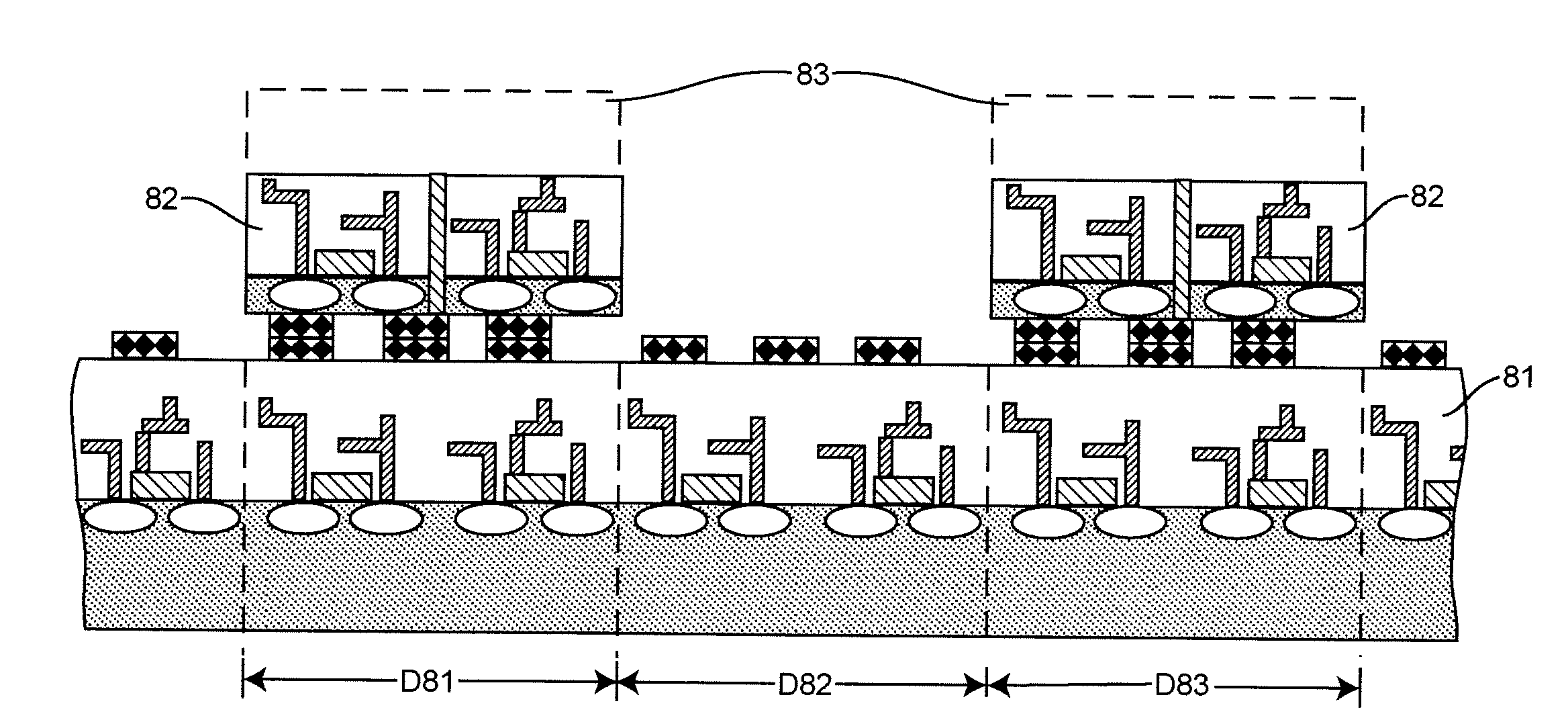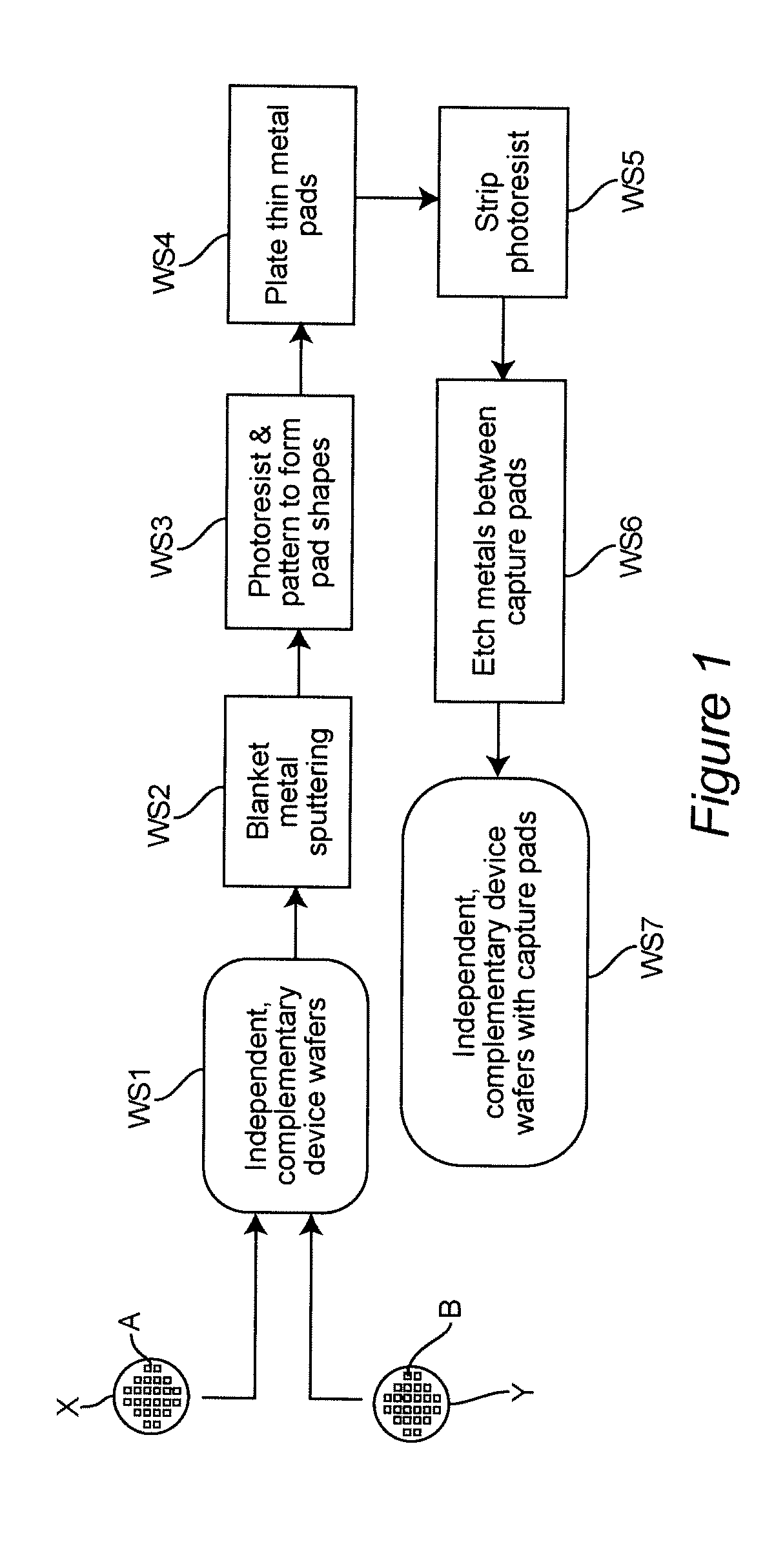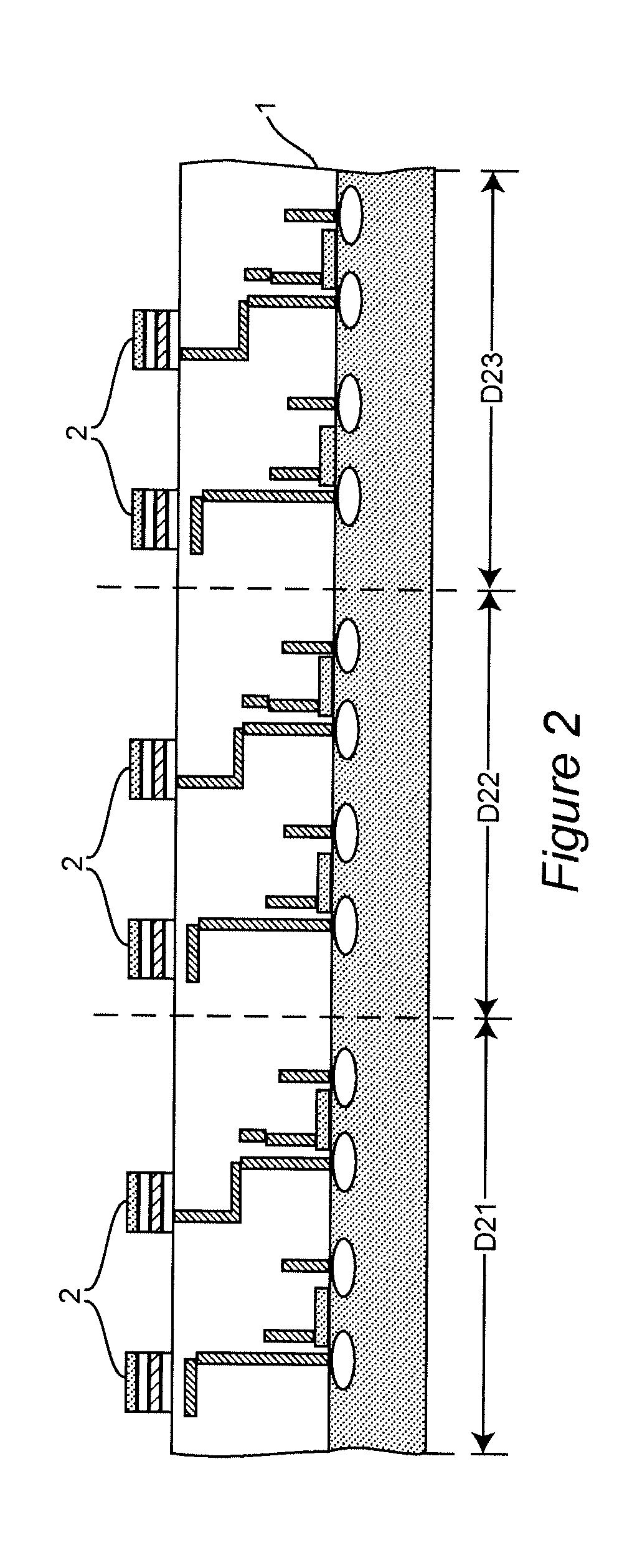Method and Structure for Optimizing Yield of 3-D Chip Manufacture
a technology of 3-d chips and manufacturing methods, applied in the direction of electrical equipment, semiconductor devices, semiconductor/solid-state device details, etc., can solve the problems of limiting the performance gain of single chips and multi-chip packages, affecting the availability of connections to the outside package, and affecting the efficiency of 3-d chip manufacturing, etc., to achieve the effect of reducing the aspect ratio of the via, reducing the frequency of good-die-to-good-die bonding, and reducing the cos
- Summary
- Abstract
- Description
- Claims
- Application Information
AI Technical Summary
Benefits of technology
Problems solved by technology
Method used
Image
Examples
Embodiment Construction
[0028]FIGS. 1 through 4c illustrate a fabrication process for a 3-D integrated chip according to a preferred embodiment of the invention. Referring to FIG. 1, the fabrication process begins with the process of forming capture pads on at least two independent device wafers X and Y already having a plurality of chips types A and B respectively formed thereon in step WS1. Chips A and B are designed such that they are complementary to one another in layout so that they may be interconnected by a 3-D integration process to form a chip stack. Blanket metals are applied to the top side of the wafers by a sputtering process in step WS2. The blanket metal layer improves the adhesion of the pads, and may consist of Cr, Cu, Ni, Ta, and various combinations of Ti, and may be in plural layers at various thicknesses. Preferably, the blanket metal layer is TiW (10 / 90) at 1650 Å, CrCu (50 / 50) at 1800 Å, and Cu at 4300 Å. Photoresist is applied to the surface and patterned in accordance with desired...
PUM
 Login to View More
Login to View More Abstract
Description
Claims
Application Information
 Login to View More
Login to View More - R&D
- Intellectual Property
- Life Sciences
- Materials
- Tech Scout
- Unparalleled Data Quality
- Higher Quality Content
- 60% Fewer Hallucinations
Browse by: Latest US Patents, China's latest patents, Technical Efficacy Thesaurus, Application Domain, Technology Topic, Popular Technical Reports.
© 2025 PatSnap. All rights reserved.Legal|Privacy policy|Modern Slavery Act Transparency Statement|Sitemap|About US| Contact US: help@patsnap.com



